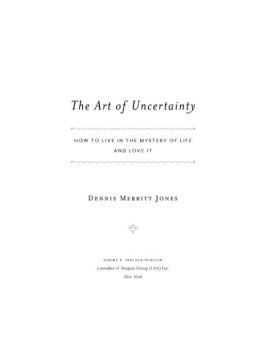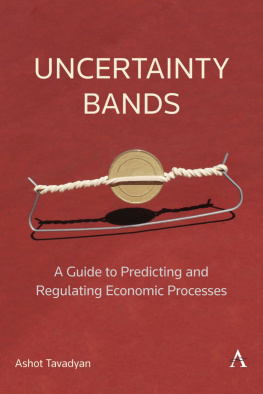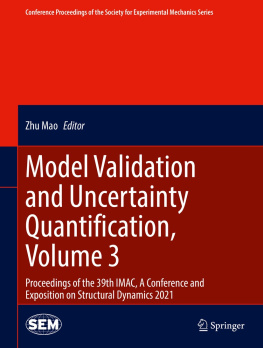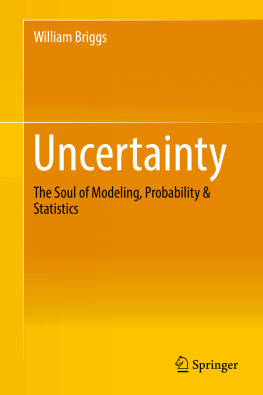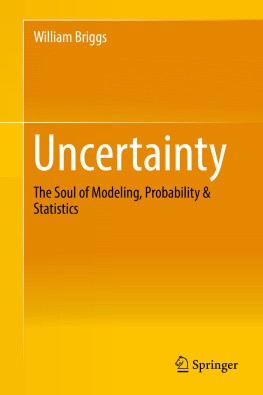Wiley Series in Probability and Statistics
Established by WALTER A. SHEWHART and SAMUEL S. WILKS
Editors: David J. Balding, Noel A. C. Cressie, Garrett M. Fitzmaurice, Harvey Goldstein, Iain M. Johnstone, Geert Molenberghs, David W. Scott, Adrian F. M. Smith, Ruey S. Tsay, Sanford Weisberg
Editors Emeriti: Vic Barnett, J. Stuart Hunter, Joseph B. Kadane, Jozef L. Teugels
A complete list of the titles in this series appears at the end of this volume.
Copyright 2014 by John Wiley & Sons, Inc. All rights reserved.
Published by John Wiley & Sons, Inc., Hoboken, New Jersey.
Published simultaneously in Canada.
No part of this publication may be reproduced, stored in a retrieval system, or transmitted in any form or by any means, electronic, mechanical, photocopying, recording, scanning, or otherwise, except as permitted under Section 107 or 108 of the 1976 United States Copyright Act, without either the prior written permission of the Publisher, or authorization through payment of the appropriate per-copy fee to the Copyright Clearance Center, Inc., 222 Rosewood Drive, Danvers, MA 01923, (978) 750-8400, fax (978) 750-4470, or on the web at www.copyright.com . Requests to the Publisher for permission should be addressed to the Permissions Department, John Wiley & Sons, Inc., 111 River Street, Hoboken, NJ 07030, (201) 748-6011, fax (201) 748-6008, or online at http://www.wiley.com/go/permission .
Limit of Liability/Disclaimer of Warranty: While the publisher and author have used their best efforts in preparing this book, they make no representations or warranties with respect to the accuracy or completeness of the contents of this book and specifically disclaim any implied warranties of merchantability or fitness for a particular purpose. No warranty may be created or extended by sales representatives or written sales materials. The advice and strategies contained herein may not be suitable for your situation. You should consult with a professional where appropriate. Neither the publisher nor author shall be liable for any loss of profit or any other commercial damages, including but not limited to special, incidental, consequential, or other damages.
For general information on our other products and services or for technical support, please contact our Customer Care Department within the United States at (800) 762-2974, outside the United States at (317) 572-3993 or fax (317) 572-4002.
Wiley also publishes its books in a variety of electronic formats. Some content that appears in print may not be available in electronic formats. For more information about Wiley products, visit our web site at www.wiley.com .
Library of Congress Cataloging-in-Publication Data:
Lindley, D. V. (Dennis Victor), 1923
Understanding uncertainty / Dennis V. Lindley, Minehead, Somerset, England.Revised edition.
pages cm
Includes bibliographical references and index.
ISBN 978-1-118-65012-7 (cloth)
1. Probabilities. 2. UncertaintyMathematics. 3. Decision makingMathematics. 4. Mathematical statistics. I. Title.
QA273.L534 2013
519.2dc23
2013013977
Preface
There are some things that you, the reader of this preface, know to be true, and others that you know to be false; yet, despite this extensive knowledge that you have, there remain many things whose truth or falsity is not known to you. We say that you are uncertain about them. You are uncertain, to varying degrees, about everything in the future; much of the past is hidden from you; and there is a lot of the present about which you do not have full information. Uncertainty is everywhere and you cannot escape from it.
Truth and falsity are the subjects of logic, which has a long history going back at least to classical Greece. The object of this book is to tell you about work that has been done in the twentieth century about uncertainty. We now know that uncertainty has to obey three rules and that, once they are understood, uncertainty can be handled with almost as much confidence as ordinary logic. Our aim is to tell you about these rules, to explain to you why they are inevitable, and to help you use them in simple cases. The object is not to make you an expert in uncertainty but merely to equip you with enough skill, so that you can appreciate an uncertain situation sufficiently well to see whether another person, lawyer, politician, scientist, or journalist is talking sense, posing the right questions, and obtaining sound answers. We want you to face up to uncertainty, not hide it away under false concepts, but to understand it and, moreover, to use the recent discoveries so that you can act in the face of uncertainty more sensibly than would have been possible without the skill. This is a book for the layman, for you, for everyone, because all of us are surrounded by uncertainty.
However, there is a difficulty, the rules really need to be written in the language of mathematics and most people have a distaste for mathematics. It would have been possible for the book to have been written entirely in English, or equally in Chinese, but the result would have been cumbersome and, believe me, even harder to understand. The presentation cries out for the use of another language; that of mathematics. For mathematics is essentially another language, rather a queer one, that is unfamiliar to us. However, you do not, for this book, need to understand this language completely; only a small part of it will be required. It is somewhat like an English speaker needing about six characters from Chinese out of the many thousands that the language uses. This book uses part of the language of mathematics, and this part is explained carefully with, I hope, enough motivation for you to be convinced of its advantages. There is almost no technical use of mathematics, and what there is can be appreciated as easily as ordinary arithmetic.
There is one feature of our uncertain world that may either distress or excite you, I hope the latter, in that it does not always behave like common sense might suggest. The most striking example is Simpson's paradox, in Chapter 8, where a medical treatment appears to be bad for both the men and the women, but good for all of us. We will apply the ideas about uncertainty to the law, to science, to economics, and to politics with sometimes surprising results.
The prologue tells something about how this book came to be written. The final version owes a great deal to Jos Bernardo, Ian Evett, and Tony O'Hagan who read a draft and made many constructive proposals, almost all of which have been eagerly incorporated. In addition, Jay Kadane read the draft with a keen, critical eye, made valuable suggestions, and persuaded me not to ride too vigorously into fields where I had more passion than sense. The final version is much improved as a result of their kind efforts.
Preface to the Revised Edition
The principal change from the original edition is the inclusion of an additional Chapter 14, describing the impact the ideas of this book have on statistics, betting, and finance. The treatment of one problem (12.4 and 12.5) has been enlarged because of developments between the two editions. Efron's dice have been discussed because some readers have queried an important assumption. Minor changes have been made in the interests of clarity, several kindly suggested by Mervyn Stone. I would like to thank my daughter, Rowan, for help with the logistics, without which this new edition would not have been possible; and Stephen Quigley at Wiley for persuading me to undertake the revision.
Prologue
Almost all my professional life has been spent in academe as a statistician. In my first appointment in Cambridge, I was required to lecture for 6 hours each week during half of the year and personally to supervise some students. Admittedly, the preparation of new lecture courses took a lot of time, one occupying the whole of the 4 month summer vacation, but these duties did not constitute a reasonable workload. To fill the gap, one was expected to do exactly what I wanted to do, conduct research. As I moved to become professor and head of department, first in Aberystwyth and then at University College London, other duties, principally administrative, crowded in upon me and there was less time for research. But still it got done, because I wanted it to get done, often in conjunction with good, graduate students.
Next page

